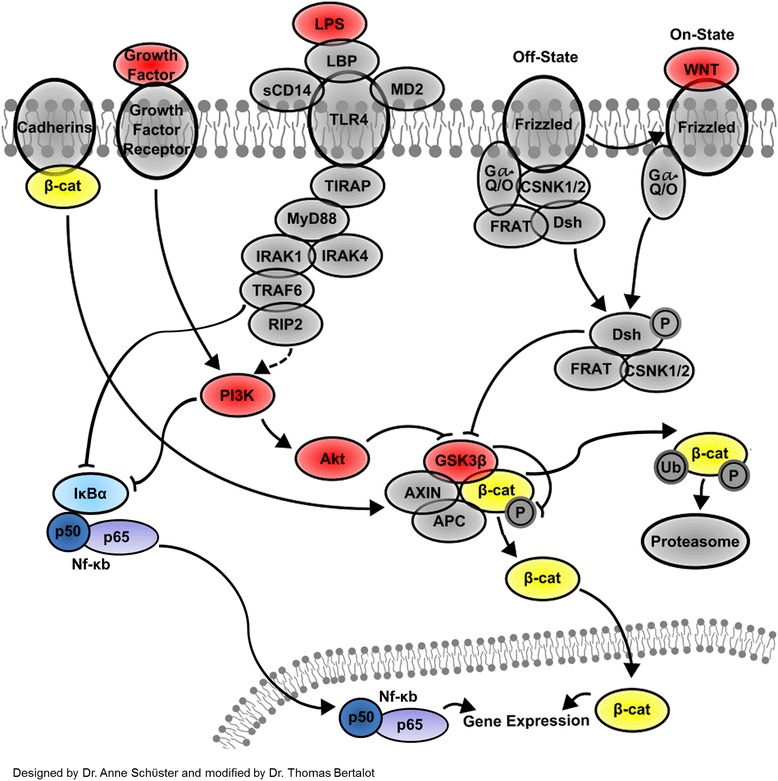Figure 7.

The interplay model of Wnt/β-catenin, LPS/TLR4, and growth factors in ENS. After the interaction of Wnt ligands with a G protein-coupled receptor (Frizzled), GSK3β is inhibited and β-catenin is released from a “scaffolding” complex consisting of Axin, adenomatous polyposis coli (APC), casein kinase 1 (CK1), and glycogen synthase kinase 3β (GSK3β). Consequently, the stabilized β-catenin shuttles to the nucleus and the transcription process of its target genes is promoted. LPS-mediated activation of TLR4 pathway or growth factor signaling involves phosphatidylinositol 3 kinase (PI3K) pathway. PI3K inactivates GSK3β through Akt, and nuclear accumulation of β-catenin occurs. In steady conditions, β-catenin is trapped at the plasma membrane by cadherins or is tagged by phosphorylation for ubiquitin-mediated degradation. In parallel, PI3K and TRAF6 inhibit IκBα and the activated heterodimer NF-κB p50/p65 translocates to the nucleus for promoting the specific gene expression.
